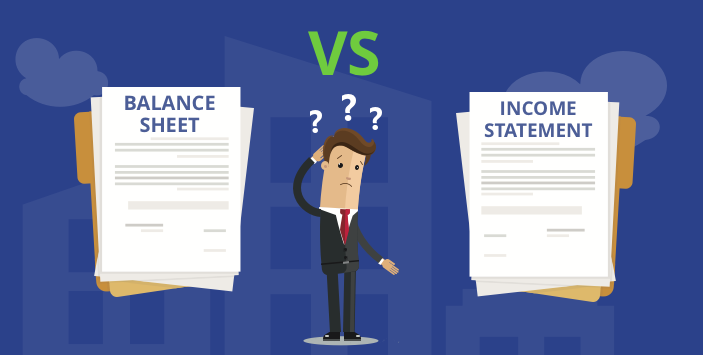Income Statement vs Balance Sheet

In financial analysis, it is important to understand the interplay of every report and the importance of gathering and interpreting data from them. Two of the most used financial statements are the Income Statement and Balance Sheet.
In a nutshell, the Income Statement shows you how profitable your business is, while the Balance Sheet gives you a snapshot of the assets and liabilities. Together, they can produce financial information that can improve the present operations and direct the future of the company.
The Income Statement: Window to Profitability
This is where your profit and loss are reflected. It provides a snapshot of a company’s revenue and expenses in a given period. It is calculated as follows:
- Net Income = (Total Revenue + Gains) – (Total Expenses + Losses)
The main factors reflected in this statement are revenue, expenses, gains, and losses. It does not differentiate between revenue in cash and those that are non-cash. It starts from the recording of sales and shows how they are converted to profit or loss.
An Income Statement provides an understanding of the efficiency of operations; measures department performance, and performance relative to industry peers; it helps identify expenses to cut and even provides information for cash flow management and financial analysis.
Based on the data from this statement, management can make decisions such as business expansion, increasing sales, increasing production, and even deciding to shut down a department or a product line.
The company can use the statement to track different sales and their costs. This data will help managers determine if the project expenses are too high or your price is too low.
The statement can also help make forward-looking decisions such as forecasting.
The Balance Sheet: Summarized Finances
The Balance Sheet provides a summary of what you own, what you owe and what remains. It lists your assets, liabilities, and the owner’s equity, indicating the company’s net worth at a specific time. The main formula used for the Balance Sheet is as follows:
- Assets = Liabilities + Shareholders’ Equity
Basically, it means that the assets are balanced by the obligations and owner’s investments. Liabilities and Shareholder’s Equity represent a source of funding for the company. If the assets are greater than the liabilities and equity, the company is in a good financial position, which means it can afford to pay off its liabilities.
Another importance of the Balance Sheet is the use of Financial Ratios. Financial strength ratios like the working capital ratio and debt-to-equity ratio provide a good reflection of the company’s financial position by how well it can meet its obligations and how they are leveraged. It provides information on the company’s stability and how a company finances itself. Activity ratios deal with current accounts, showing how well a company can manage its operating cycle which can include receivables, inventory, and payables.
Collaboration
In financial analysis, it is rare to use only one source of data to make meaningful decisions. Often, there is a need to combine and compare not only information but expertise to create relevant interpretations.
If you need a financial partner to provide significant analysis for your business, Mehanna Advisors can accommodate your financial needs. Together, we can figure out what your business needs and customize financial solutions.
